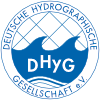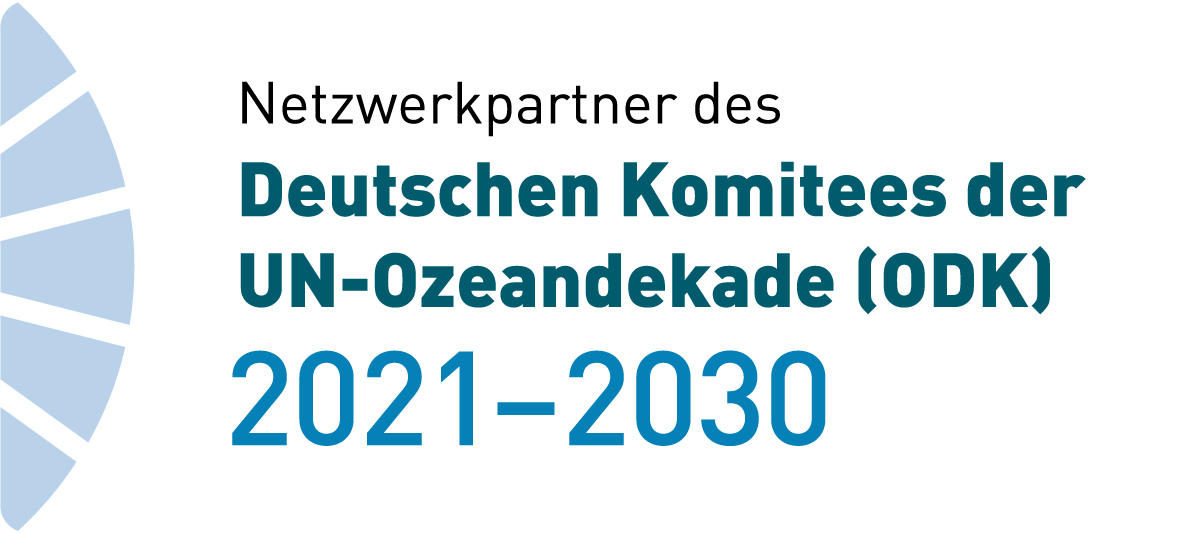HN Ausgaben wählen
- HN 132 (9)
- HN 131 (17)
- HN 130 (10)
- HN 129 (8)
- HN 128 (10)
- HN 127 (6)
- HN 126 (10)
- HN 125 (11)
- HN 124 (8)
- HN 123 (10)
- HN 122 (9)
- HN 121 (10)
- HN 120 (7)
- HN 119 (10)
- HN 118 (7)
- HN 117 (10)
- HN 116 (14)
- HN 115 (10)
- HN 114 (6)
- HN 113 (10)
- HN 112 (7)
- HN 111 (9)
- HN 110 (9)
- HN 109 (11)
- HN 108 (8)
- HN 107 (9)
- HN 106 (7)
- HN 105 (14)
- HN 104 (6)
- HN 103 (11)
- HN 102 (8)
- HN 101 (9)
- HN 100 (13)
- HN 097 (1)
Der Seevermessungstechniker-Lehrgang
Eine behördeninterne Fortbildung für hydrographische Aufgabenbereiche
Nach dem Zweiten Weltkrieg entstand in Deutschland der Seevermessungstechniker-Lehrgang, um den Bedarf an Fachpersonal für hydrographische Aufgaben zu decken. Die praxisorientierte Fortbildung richtet sich an Mitarbeitende von Bundes- und Landesbehörden mit nautischem oder technischem Hintergrund. Der Lehrgang umfasst theoretische Inhalte wie Hydrographie, Navigation und Gezeitenkunde sowie praktische Übungen an Bord. Über zwei Wintersemester hinweg werden insgesamt 684 Unterrichtsstunden vermittelt, ergänzt durch ein Bordpraktikum. Ziel ist es, die Teilnehmenden zu befähigen, eigenständig hydrographische Aufgaben durchzuführen. Trotz des hohen Aufwands ist der Lehrgang für die Teilnehmenden kostenfrei und gilt als äußerst wertvoll.
Seevermessungstechniker-Lehrgang | Fortbildung | BSH
After the Second World War, the maritime surveying technician course was created in Germany to meet the demand for specialised personnel for hydrographic tasks. The practice-orientated training course is aimed at employees of federal and state authorities with a nautical or technical background. The course includes theoretical content such as hydrography, navigation and tidal science as well as practical exercises on board. A total of 684 teaching hours are taught over the course of two winter semesters, supplemented by an onboard internship. The aim is to enable participants to carry out hydrographic tasks independently. Despite the high level of effort involved, the course is free of charge for participants and is considered extremely valuable.
maritime surveying technician course | further training | BSH
- Ausgabe: HN 131, Seite 26–28
- DOI: 10.23784/HN131-06
- Autor/en: Bernd Vahrenkamp
International hydrographic training in the Netherlands
In addition to the IHO-FIG-ICA International Board of Standards for Competence of Hydrographic Surveyors and Nautical Cartographers (IBSC) recognised S5-A »Ocean Technology« course at the Maritime Institute Willem Barentsz (MIWB) in Terschelling, the Netherlands offers two other, more internationally, focused courses. One is the IBSC S5-B recognised course at Skilltrade, the other is the recent set-up »Hydrographic Surveying and Marine Geodesy« at the MIWB. This article describes the set-up of both courses and how they fit into international hydrographic training and competency development.
Category A | Category B | Maritime Institute Willem Barentsz (MIWB) | Skilltrade | HPAS
Neben dem vom IBSC (IHO-FIG-ICA International Board of Standards for Competence of Hydrographic Surveyors and Nautical Cartographers) anerkannten S5-A-Kurs »Ocean Technology« am Maritimen Institut Willem Barentsz (MIWB) in Terschelling bieten die Niederlande zwei weitere, stärker international ausgerichtete Kurse an. Der eine ist der vom IBSC anerkannte S5-B-Kurs bei Skilltrade, der andere ist der kürzlich eingerichtete Kurs »Hydrographic Surveying and Marine Geodesy« am MIWB. Dieser Artikel beschreibt den Aufbau beider Kurse und wie sie sich in die internationale hydrographische Ausbildung und Kompetenzentwicklung einfügen.
Category A | Category B | Maritimes Institut Willem Barentsz (MIWB) | Skilltrade | HPAS
- Ausgabe: HN 131, Seite 22–25
- DOI: 10.23784/HN131-05
- Autor/en: Huibert-Jan Lekkerkerk
Hydrographie studieren an der HafenCity Universität Hamburg
Vom Vermessen auf, über und unter Wasser
Die Hydrographieausbildung an der HafenCity Universität Hamburg (HCU) blickt mittlerweile auf 40 Jahre Erfahrung zurück. Hamburg ist deutschlandweit der einzige Universitätsstandort, welcher einen vollumfänglichen Masterstudiengang zur Vertiefungsrichtung Hydrographie anbietet. Das FIG/IHO/ICA International Board on Standards of Competence for Hydrographic Surveyors and Nautical Cartographers (IBSC) zertifizierte dieses Programm nach »Category A«. In diesem Artikel wird die Vertiefungsrichtung sowie die generelle Hydrographieausbildung an der HCU mitsamt den Akteuren und dem hauseigenen Vermessungsschiff DVocean vorgestellt. Zudem gibt er einen kurzen Überblick über die praktischen Inhalte während des Studiums und Möglichkeiten für Offshore-Erfahrungen.
Hydrographieausbildung | HCU | Masterprogramm | »CAT A«-zertifiziertes Programm | Summer School
Hydrography training at HafenCity University Hamburg (HCU) can now look back on 40 years of experience. Hamburg is the only university location in Germany to offer a full Master’s programme with specialisation in hydrography. The FIG/IHO/ICA International Board on Standards of Competence for Hydrographic Surveyors and Nautical Cartographers (IBSC) certified this programme according to »Category A«. This article presents the specialisation programme as well as the general hydrography training at HCU, including the participants and the in-house survey vessel DVocean. Additionally presented is a brief overview of the practical content during the programme and opportunities for offshore experience.
hydrography training | HCU | Master programme | CAT-A certified programme | summer school
- Ausgabe: HN 131, Seite 18–21
- DOI: 10.23784/HN131-04
- Autor/en: Ellen Heffner, Timo Nischik, Harald Sternberg
IFHS HPAS – Darum lohnt sich eine persönliche Zertifizierung!
Der Artikel stellt das Hydrographic Professional Accreditation Scheme (HPAS) vor – ein multinationales, mehrstufiges Zertifizierungsprogramm der International Federation of Hydrographic Societies (IFHS). Im Gegensatz zur Akkreditierung »Category A/B«, die Ausbildungsprogramme anerkennt, zertifiziert HPAS Einzelpersonen und ihre individuelle Qualifizierung, Berufserfahrung und kontinuierliche Weiterbildung. HPAS umfasst drei Level sowie ein Affiliate-Level für Studierende. Es fördert die internationale Vergleichbarkeit persönlicher beruflicher Qualifikationen, besonders für Berufserfahrene und Quereinsteiger. Die DHyG unterstützt das Programm aktiv und übernimmt 2025 für drei Mitglieder die Gebühren.
HPAS | persönliche Zertifizierung | Berufsqualifizierung | fortlaufende berufliche Weiterbildung
This article introduces the Hydrographic Professional Accreditation Scheme (HPAS) – a multinational, multi-level certification scheme of the International Federation of Hydrographic Societies (IFHS). In contrast to the »Category A/B« accreditation, which assesses the training programmes, HPAS certifies individuals based on their professional experience, responsibility and continuing professional development. HPAS comprises three levels as well as an affiliate level for students. It promotes the international comparability of personal qualifications, especially for experienced professionals and career changers. The DHyG actively supports the programme and will cover the fees for three members in 2025.
HPAS | personal certification | professional qualification | continuing professional development
- Ausgabe: HN 131, Seite 14–17
- DOI: 10.23784/HN131-03
- Autor/en: Tanja Dufek
Die Rolle des IBSC bei der Weiterentwicklung der Inhalte der Hydrographieausbildung
Das International Board on Standards of Competence for Hydrographic Surveyors and Nautical Cartographers (IBSC) pflegt die Kompetenzstandards für die hydrographische Vermessung und die nautische Kartografie und erteilt internationale Anerkennungen für Ausbildungsprogramme, die den Standards entsprechen. Die Standards werden ständig überprüft und überarbeitet, um den aktuellen Entwicklungen in der Technologie und in den Lehr-/Lernszenarien Rechnung zu tragen und die Erwartungen der Interessengruppen zu berücksichtigen. Dieser Artikel befasst sich mit der historischen Entwicklung des IBSC, mit aktuellen Anerkennungen und zukünftigen Schwerpunkten der Standards.
IBSC | Kompetenzstandards | hydrographische Vermessung | nautische Kartografie | Kategorie A und B
The International Board on Standards of Competence for Hydrographic Surveyors and Nautical Cartographers (IBSC) maintains the standards of competence for hydrographic surveying and nautical cartography and grants international recognition for training programmes that meet the standards. The standards are constantly reviewed and revised to take account of current developments in technology and teaching/learning scenarios and to reflect stakeholder expectations. This article looks at the historical development of the IBSC, current endorsements and future areas of focus for the standards.
IBSC | standards of competence | hydrographic surveying | nautical cartography | Cat A and B
- Ausgabe: HN 131, Seite 10–13
- DOI: 10.23784/HN131-02
- Autor/en: Harald Sternberg


